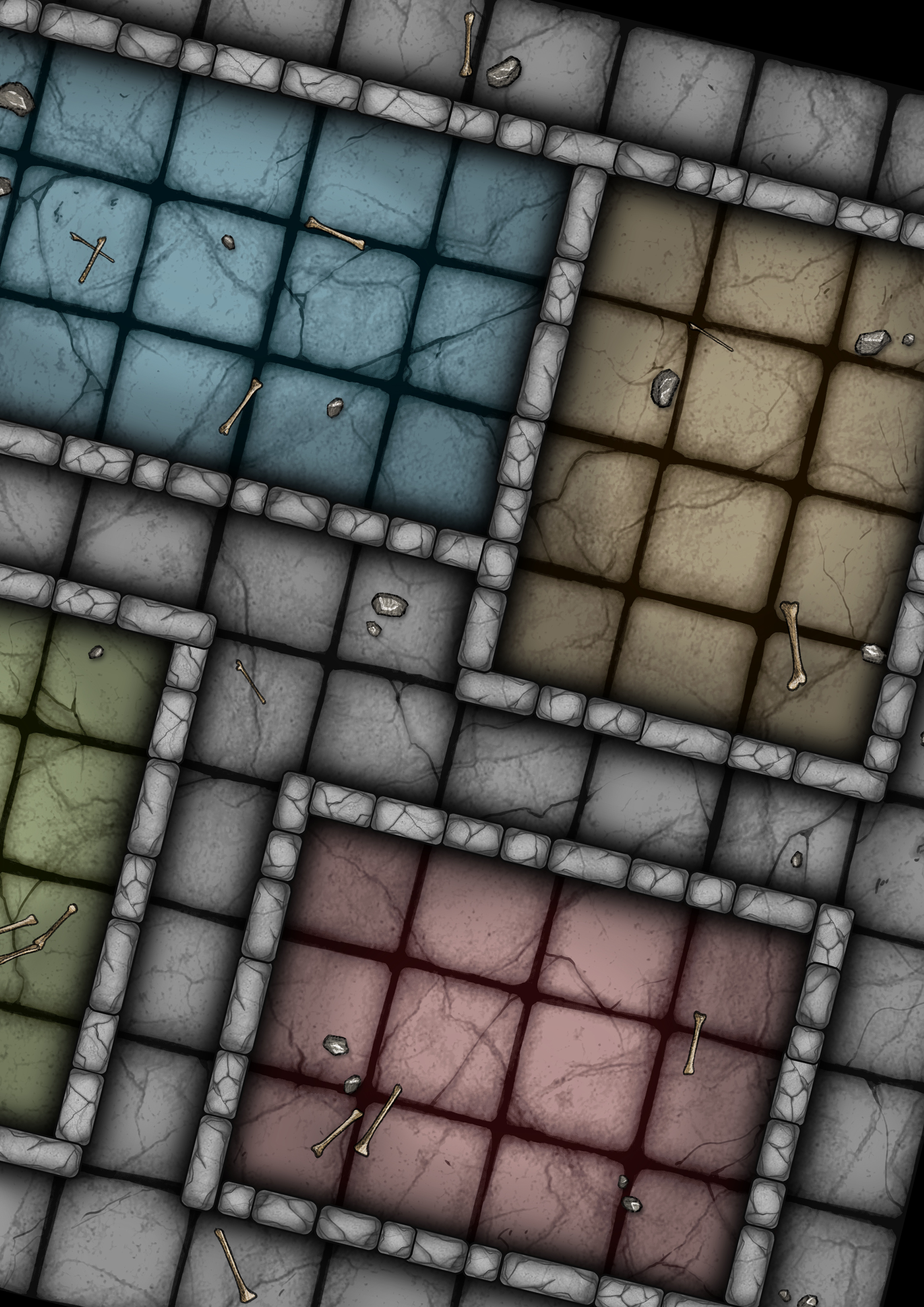
INTRODUCTION
GETTING STARTED
One player must assume the role of the Dungeon Master. The other players will assume the roles of the Heroes.
Important: The role of Dungeon Master is a vital one. They will control the Adventure for the other players. They alone will know where the monsters, traps, secrets, and treasures are located.
SETTING UP THE GAME
The Dungeon Master will set up the game for the players by taking the following steps:
1. ADVENTURE BOOK
The Dungeon Master will open the Adventure Book and read the Introduction and Setup to the other players.
INTRODUCTIONThis text gives a back story to the adventure and the quests the players are about to go on. It may provide hints on what heroes might be best to select for such an adventure.
SETUPThis small section will tell the players how many heroes will be needed and if any specific heroes are required for the adventure.
The heroes should be divided among the players as best they can. It is not important that each player has the same number of heroes as they are working as a team.
THE FIRST QUESTThe Dungeon Master will then turn to Quest 1 of the Adventure book and read the instructions to themselves.
Each Quest features different sections: The Prologue, Map, Notes, and Rewards.
THE PROLOGUEThe prologue text is to explain the Heroes purpose for the quest and to continue the story. When ready to start the quest, this text should be read aloud to the Hero players.
THE MAPThe Quest Map shows how the gameboard is to be laid out as the game progresses. The map is marked with symbols that show where everything goes.
Important: Do not place anything on the gameboard until the heroes are in sight of the objects.
THE NOTESThe Dungeon Master should read the Notes to themselves before starting the Quest and reference the locations on the map. These notes will explain what happens in certain rooms and detail the unique situations the Hero players will encounter while playing the quest.
2. GAMEBOARD
To create the gameboard you will lay out the boards flat on the table. You should determine which six boards you will be using by referencing the map in the quest book. The letters in the corner of each game board will show you which board to use and what orientation to place the board on the table. The game boards are double-sided and feature a dungeon on one side and a village setup on the other.


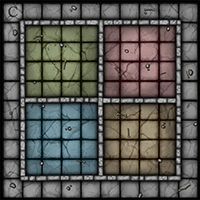

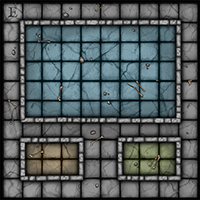

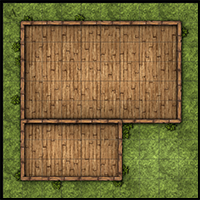
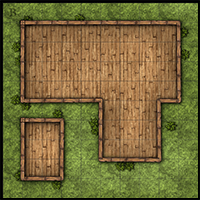
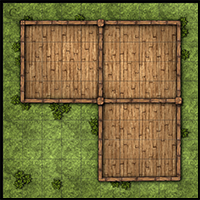
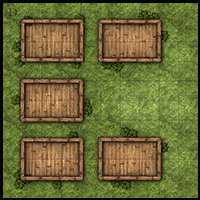
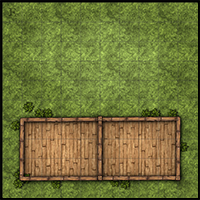
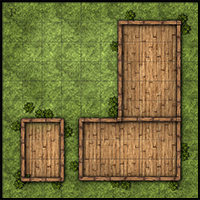
3. HERO STATS SHEETS
Give each player a hero stats sheet for every hero they are playing. They will use this sheet to keep track of the heroes stats such as health, energy, items, etc. These stats include:
HEALTHThis reflects the hero’s available health points. If a hero reaches zero, they have died.
ENERGYThis reflects the hero’s available energy points. Each hero has unique abilities that will cost energy points to use.
ATTACKThis reflects the combat power of the hero’s basic attack. During the quest, the hero’s attack strength is continually changed by events (e.g., Combat, spells, weapons, etc.).
DEFENDThis reflects the defense power of the hero. During the quest, the hero’s defense strength is continually changed by events (e.g., Combat, spells, weapons, etc.).
MOVEMENTThis reflects the number of squares a hero can move on each turn. Events can increase and/or decrease this as well.
YOUR ADVENTURE
The dungeon master will read the Prologue for the Quest from the Adventure Book.
Important: Only read the prologue aloud.
ORDER OF PLAY
After all the hero characters have taken a turn, the Dungeon Master will get a turn for each of his enemy characters currently in play. Finally, to end the round a random event will take place.
THE HEROES TURN
Each turn a hero character may move and then perform an action. They do not need to move, but once an action has taken place that will end their turn.
MOVEMENTTo determine how many squares spaces to move, you need to reference your character card. Each character starts with a default number of spaces they can move.
OPENING DOORSWhile moving, you may “look†down a corridor or through an open door. Looking gives you the opportunity to see what is directly within your line of sight, such as walls, monsters, and doors. If your character is adjacent to a closed door, they may choose to open the door. This does not count as an action.
SEARCHINGWhile moving, if you are adjacent to a piece of furniture, you may choose to search for it. This does NOT count as an action and can be performed multiple times per turn. The dungeon master will check the quest books notes and let you know if you find anything. After you may continue your movement. Searching may cause other events to happen that would end your turn if stated on the event.
REACTING TO MOVEMENTThe dungeon master must carefully watch the Hero’s movement. Continually refer to the Quest Map in the Quest Book. When an object comes within a heroes’ sight you must let the pause the movement and place on the gameboard any closed doors, square tiles, monsters, furniture, etc. that are directly within the Hero’s line of sight. Note: Don’t place any traps or secret doors on the gameboard currently. They can only be revealed by Triggers.
TRIGGERSAs a Hero, while you play you might trigger certain things to happen. These triggers are listed in the notes section of the Quest Book and the dungeon master will let you know when it activates. Anything with a trigger will be shown with a red tile in the Quest Book.
TRAPSA prime example of a trigger would be when a hero is searching for a chest or stepping on a certain square. The dungeon master will see these triggers on the quest map and pause the game when a trigger is set in action.
SECRET DOORSA secret door will open a hidden door that didn't exist on the board.
ACTIONS
A hero may perform only one action per turn. Unless they are using some effect that grants them additional actions.
ACTION 1: ATTACK
You may attack any monster that you are in range to hit using a basic attack. Your attack strength and range are located on your hero’s card. The number of attack points will determine how many combat dice to throw. The range indicates the minimum number of squares you need to be near a target to attack. For angled shots the players can judge the distance or use the included range ruler.
HOW A HERO ATTACKSAs a Hero, you must roll the orange hero dice to attack. The number of dice to roll depends on your attack points listed on your character panel.
Each sword rolled is a potential hit. The enemy will immediately roll its defense dice. The target will take 1 Health point of damage for each hit not defended. If the target’s Health Points reach zero, the monster is considered dead and is removed from the gameboard.
HOW A MONSTER DEFENDSA defending monster rolls the black darkness dice to defend. The number of dice to roll depends on the defense points listed for that monster. Each shield rolled by will block an incoming hit.
If a monster is hit but not killed the dungeon master can place a hit tile under the monster to keep track of how its remaining health.
ACTION 2: ABILITIES
You may use an ability. Each hero has their own unique abilities that can be referenced by their ability cards. Mark down on the character card the ability cost listed on the right upper cover of the card.
ACTION 3: USE AN ITEM
As a Hero, you may choose to use an item from your inventory. Powerful artifacts can be triggered or maybe drink a potion.
ACTION 4: RE-ENERGIZE
You may choose to re-energize. This will restore one ability point to the hero.
ACTION 5: SPRINT
You may choose to move a second time. This is great for running away from danger.
ACTION 6: TRADE
You may trade items with another hero. You must be adjacent to the hero you would like to trade with. This only ends the turn for the hero initiating the trade regardless of if they are giving or taking an item from the other hero.